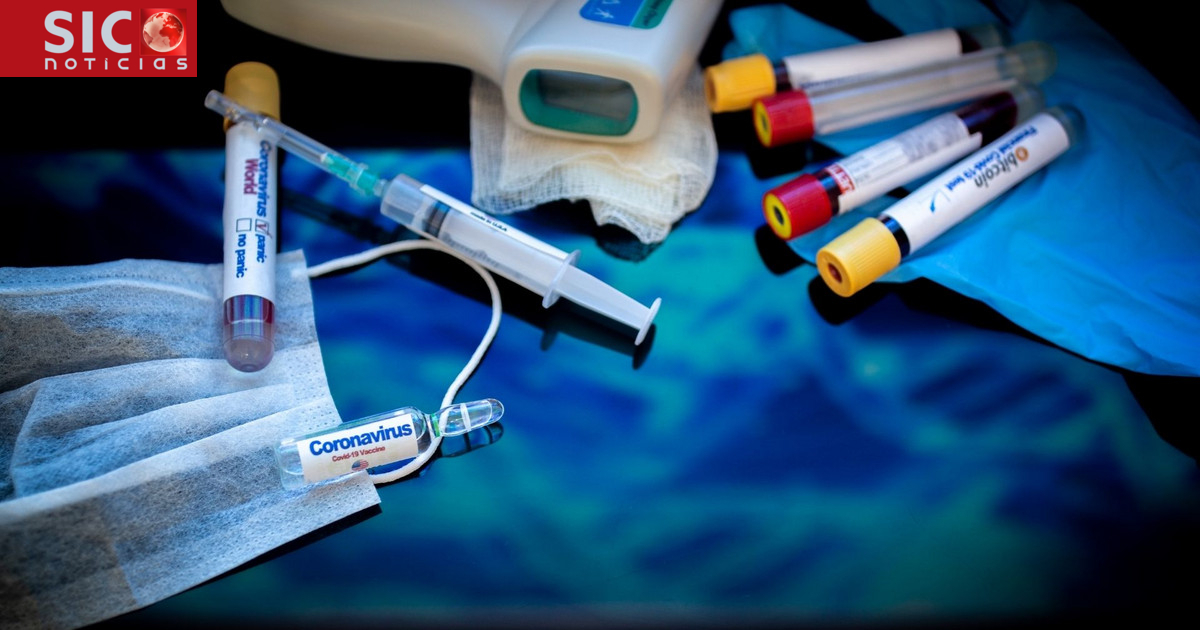Economy
Covid-19: the number of vaccinations in Portugal and in the world


Rooms in Portugal
12,886,770
got doses
11 640 383
Inoculated doses
97,475
Average daily value for the last seven days
VACCATED POPULATION
6.865.047
with a dose (67.2%)
5,389,935
with complete vaccine (52.4%)

Until 70% of the population reaches at least one dose, a few more days.
Portugal has already received nearly 13 million doses. So far, only one in three Portuguese has not started the vaccination process: 3.3 million people. Most of them will not be vaccinated because they have not reached the appropriate age.
AGE VACCINATION
% Of the population of each age group
The latest DGS report for the week of July 19 to July 25 reported 663,000 doses, down 94,000 from the previous week. The largest campaign effort has been directed at the 25-49 year old population, where more than 3 out of every 5 doses given in the past week have been directed.
AGE-CONTROLLED DOSES
Distribution of the accumulated number of doses (in thousands) by age groups. from 15 February
FIRST DOSES BY AGE RANGE
Weekly doses (data from Monday to Sunday)
SECOND DOSE BY AGE RANGE
Weekly doses (data from Monday to Sunday)
Lisbon and Vale do Tejo are the regions with the highest number of vaccinations and, at the same time, one of the regions with the lowest vaccination coverage: 51% of the population is fully vaccinated; and 65% with at least one dose. The Azores (61% of the population with at least one dose) and Madeira (50% of the population with a full vaccination schedule) also stand out with negative results.
With 68% of the vaccinated population, the North, Center and Alentejo are regions of the country where vaccination has progressed further.
VACCINATION BY REGION
On mainland Portugal
All over the world, one way to understand how fast vaccinations are being carried out in different countries is to observe the number of doses administered per 100 inhabitants.
COUNTRIES WITH THE LARGEST NUMBER OF INOCULATED DOSES
Total vaccinated doses per 100 inhabitants. In countries and territories with a population of more than 400 thousand people
Israel was in the lead early in the race. The government, which sought re-election in March, paid nearly double what the European Union paid for each dose, and it shares clinical information from citizens with the pharmaceutical company Pfizer on a weekly basis.
The United Arab Emirates, and in Europe, the United Kingdom also occupies an enviable position in the world rankings. In the countries of South America, Chile stands out from all the rest.
TOTAL DOSES IN THE EUROPEAN UNION
Total inoculated doses per 100 inhabitants
Portugal has almost always been on par with the average of its 27 member states, but since early July it has accelerated its pace and is ahead of the reference average.… When comparing the number of doses vaccinated by European partners, Portugal ranks 5th between Spain and Germany. Malta stand out positively… With the smallest number of doses per capita – Bulgaria and Romania.
DOSES DISTRIBUTED IN PORTUGAL
Total per week by number of doses
In the European Union, vaccines are sent simultaneously to all Member States and the dose distribution is proportional to the number of inhabitants in each country. However, Member States are vaccinating at different rates. In Portugal, the vaccine Pfizer / BioNTech is the most widely represented and Janssen (J&J) has the least dose distribution.
DAILY INJECTION DOSES
Average daily value for the previous 7 days
Portugal buys over 32 million doses of various covid-19 vaccines… The purchase is part of an agreement between the European Union and six pharmaceutical companies. Currently there are four vaccines approved by the European Medicines Agency and used in Portugal: BioNTech / Pfizer, Moderna, AstraZeneca and Janssen.
The European Medicines Agency oversees the development of the Curevax, Novavax and Spuntik V vaccines.
POPULATION WITH FULL VACCINE
Percentage of the resident population with a complete vaccine. In countries and territories with a population of more than 400 thousand people
Implementation of each country’s vaccination plans depends on operational and logistical issues.
Four vaccines are being introduced in the country: Moderna and Pfizer / BioNTech for all ages (28 days between two doses); Janssen for all men over 18 and women over 50 (single entry); and AstraZeneca for persons over 60 years of age (2 months between two doses).
VACCINE DOSE DISTRIBUTION BY COUNTRY
Percentage of the resident population who received the 1st dose of vaccine and received the complete vaccine. In countries and territories with a population of more than 400 thousand people

“Internet specialist. Evil entrepreneur. Troublemaker. Analyst. Tv aficionado. Thinker. Passionate explorer. Bacon guru.”
Economy
What factors impact financial markets?

The global financial markets are now hugely complex, with traders and analysts around the world looking closely for signs of movement. What are some of the most important factors to be aware of that impact the financial markets?
Geopolitical events
With news breaking from different countries throughout the day, many different stories could affect the markets on any given day. For instance, economic indicators such as the European Central Bank’s inflation rates and gross domestic product numbers released by each country can determine which direction the markets take. Stocks, currencies and other financial instruments can all vary depending on these areas.
Major events such as war breaking out, natural disasters and elections also have an effect. When we look at the commodities market, climate change is an issue to bear in mind, with unusual weather sometimes causing scarcity or abundance of a certain product.
An interesting aspect of the modern financial world is the way that the different markets are linked. This means that any important event or news story that affects one area could easily affect another, even if the link isn’t obvious at first sight. We can also see how local shocks and events can quickly have an effect at a global level.
The financial crisis of 2008 is a good example, as it started with a serious downturn in the US housing market. Although this appeared to be a localized issue at first, it soon revealed some major issues with the global banking setup that caused problems around the planet affecting millions of people and diverse industries.
Speculation and investment trends
The previous factors all point toward the markets changing, and there’s no shortage of traders around the world waiting to see what happens next and how they can benefit. This means that we need to take into account other issues such as speculation and investment trends in the markets.
Armed with a variety of tools, including candlestick charts, traders try to identify trends such as support and resistance levels. They use the information they glean from the charts to make their moves, which can influence the general market if enough people make the same moves or if the amounts involved are significant.
Once an investment trend begins, it can have a knock-on effect that would have been impossible to predict at the outset. The example of Bitcoin and other cryptocurrencies shows how something that starts small can grow impressively. Cryptocurrencies have now gained enough mainstream appeal to influence and disrupt many industries, from healthcare to gaming and banking.
It’s important to understand how the leaders of a company operate and how they have faced challenges in the past. If we look at banking and the Bank of New York Mellon in particular, we can see that its history can be traced back to 1784, so it has overcome all the major events that have occurred since then. With some of the biggest names in the business world making up its key institutional investors, this is a company that we would expect to react effectively to changing markets.
Regulatory changes and company results
Just about every industry represented in the financial markets has laws and regulations that govern it. This means that the fear of harsher new laws is an almost constant threat. Meanwhile, the hope that beneficial changes to the regulations help businesses prosper is the other side of this matter that investors keep a close eye on.
Let’s not forget the role played by the profit and loss results produced by major companies. It’s clear that these results have an almost immediate effect on their stock prices. However, we should also bear in mind that this effect can reach other areas of the economy. A surprising set of results for a large business can produce shock waves that travel around the market.
What impact do they cause?
From the wide variety of examples that we’ve looked at here, it’s clear that the impact isn’t going to be the same in every case. While one set of circumstances might snowball and cause a huge impact, another might cause a limited impact before the news disappears as other events overtake it.
Having said that, one of the key issues that they cause is a higher degree of market volatility. We can see how this works by looking at an area such as the COVID-19 pandemic in 2020. The markets became a lot more volatile as the different aspects of the pandemic became clear. Streaming companies, healthcare companies and video conferencing technology firms made huge profits, while airlines and hotels were among those to lose out massively.
Working out the overall impact of a particular situation is almost impossible to do now. With so many traders looking over the latest news stories and numbers with advanced tools, the original impact can quickly grow or simply disappear. Therefore, the key for investors is to understand emerging trends and react to them before it’s too late.
These details reveal how complex the global financial market is now. It’s a fascinating world, and with more information at our fingertips than ever before, it’s something that anyone can start to research and understand in their own way.

Proud web evangelist. Travel ninja. Creator. Freelance food nerd. Passionate bacon fanatic.
Economy
Everything has been delivered. 10 Bugatti Centodieci are already in the hands of the owners

OAll Bugatti Centodieci have been delivered, the Molsheim-based brand said on Monday. Cristiano Ronaldo received the number 07 in October this year. and Bugatti has now revealed that the latest unit – #10 – is already in the possession of its owner.
“The Centodieci combines all the values of the Bugatti brand in an extraordinary package: rarity, innovation, heritage, craftsmanship and unrivaled performance. The production batch of 10 units was so in demand by our customers that it was sold before the Centodieci. was even officially presented,” said Christophe Piochon, president of Bugatti.
This latest example is finished in Quartz White with carbon fiber trim on the bottom and matte grilles. The brake calipers are painted in Light Blue Sport, as is the logo on the rear that refers to the EB110, the iconic Bugatti model that inspired this Centodieci. Inside, the predominant color is also blue, as you can see in the images above.
This block is powered by the same block as the other nine instances. The 8.0-liter W16 with four turbines is capable of developing 1600 hp. In terms of performance, this allows the Centodieci to hit 100 km/h in just 2.4 seconds and reach a top speed of 380 km/h.
Recall that each unit costs the owners eight million euros before taxes.
Read also: We already know when the Bugatti Centodieci fell into the hands of Ronaldo.

“Internet specialist. Evil entrepreneur. Troublemaker. Analyst. Tv aficionado. Thinker. Passionate explorer. Bacon guru.”
Economy
The first Dacia hybrid. “The cheapest hybrid family on the market”

BUT Dacia revealed this Monday that the hybrid engine has been available since March on the Jogger, the Romanian brand’s model known to be available with a seven-seat variant.
The Jogger Hybrid 140, Dacia’s first hybrid, will hit dealerships in March, but customers can expect and order it as early as January.
The price has been revealed by Dacia and since it’s only available in the seven-seater SL Extreme, it starts at €28,800. The brand claims it is “the most affordable hybrid family car on the market.”
Available in six existing colors to celebrate the launch of this hybrid, there will be a slate gray version, as you can see in the images above.
Equipped with a 1.6 liter four-cylinder petrol engine with 90 hp, the Jogger is also powered by two electric motors (a 50 hp engine and a high-voltage starter-generator). The total power is 140 horsepower. The electric transmission is automatic, four-speed, connected to an internal combustion engine, and two speeds are connected to an electric motor. This combined technology was possible, according to Dacia, only due to the lack of clutch.
Combined with the energy recovery levels of the 1.2kWh (230V) battery pack and the efficiency of the automatic transmission, regenerative braking delivers all-electric traction on 80% of urban journeys and saves up to 40% of fuel compared to a combustion engine vehicle.
Read also: Dual-fuel Dacia Jogger Eco-G. We tried 5 seater and LPG…

“Internet specialist. Evil entrepreneur. Troublemaker. Analyst. Tv aficionado. Thinker. Passionate explorer. Bacon guru.”
-
World4 years ago
The Gabby Petito case. Brian Landry set up camp with his family after his girlfriend disappeared
-
Top News5 years ago
Tristan Thompson reacts to Khloé Kardashian’s new appearance
-
Economy3 years ago
Everything has been delivered. 10 Bugatti Centodieci are already in the hands of the owners
-
Top News5 years ago
TLC ‘sMothered’ recap: ‘Party curled up,’ boyfriend problem
-
Top News5 years ago
Alex Cooper hosts a solo podcast
-
Top News5 years ago
2021 Ford Bronco price: Here’s how much the 2-door and 4-door cost
-
Tech5 years ago
Fall Guys is supplying out a legendary costume and Kudos as an apology present
-
Top News5 years ago
Chiara de Blasio was ‘very cold’ during the arrest of the protest: witness










